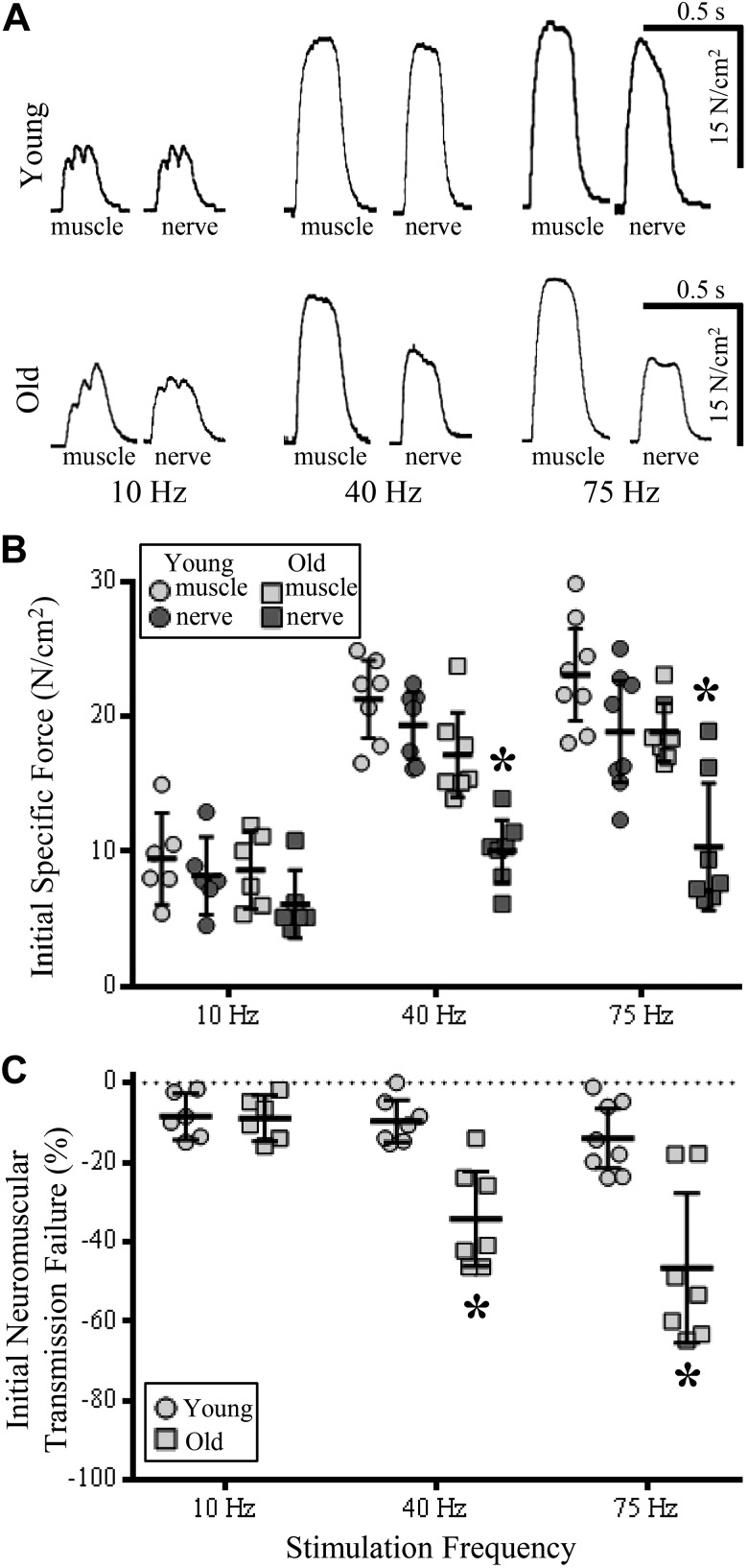Fig. 1.
Reduced diaphragm muscle (DIAm) specific and relative force generation from initial stimulation train at 40- and 75-Hz nerve-evoked stimulations in old compared with young rats. A: pairs of muscle (left) and nerve-evoked (right) DIAm force production traces from stimulations at 10, 40, and 75 Hz in young (top row) and old rats (bottom row). B: plot [means ± 95% confidence interval (CI)] illustrating decreased force of nerve-evoked DIAm contractions at 40- and 75-Hz nerve-evoked stimulations in old rats (dark gray squares) compared with young rat muscle (light gray circles) and nerve-evoked (dark gray circles) contractions and muscle contractions of old rats (light gray squares). C: plot (means ± 95% CI) illustrating increased failure of neuromuscular transmission (% of initial direct nerve-evoked compared with initial muscle-evoked force) in old (squares) compared with young rats (circles) at 40- and 75-Hz stimulations. *P < 0.01; two-way ANOVA with Bonferroni post hoc analysis; n = 7–8 rats per age.

